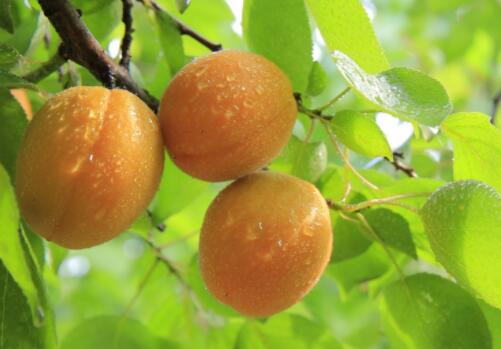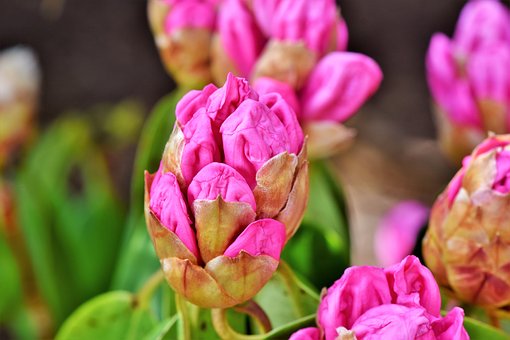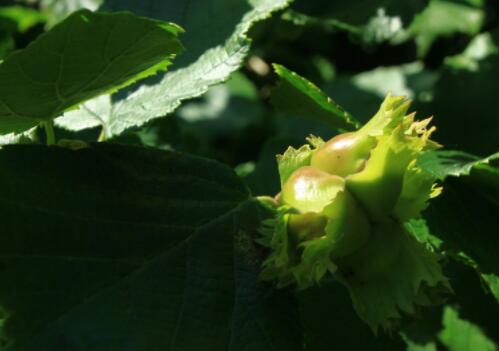Is it good to plant apricot fengshui in your yard? How to reproduce by grafting? How to trim? How many years has it been planted?
Apricot generally refers to apricot, is an important economic fruit tree species, is one of the common fruits, flowering from March to April, fruit period from June to July, mainly seed breeding. Is it good to grow apricot fengshui in the yard of that house? How to reproduce by grafting? How to trim? How many years has it been planted? As the saying goes, "peaches, three apricots and four pears are sold for five years, and jujube trees are sold for money in the same year." it means that apricot trees blossom and bear fruit in four years, but benefit earlier and enter the full fruit period in five years.

Is it good to plant apricot fengshui in your yard?
It can be planted. Apricot, with happiness and luck as for feng shui, it depends on the location, topography, orientation and other specific factors of the house.
How do apricot trees reproduce by grafting?
1. The first thing to carry out grafting propagation is the selection of cuttings. in the first step, we first select some fresh buds in the middle of the cuttings and cut across the top of the fresh buds to about the xylem of the plant. then cut from the bottom of the bud, cut to the horizontal cut above the bud, you can stop. Gently remove the epidermis on both sides of the bud with your fingers, about 1.5 cm in length and 0.5 cm in width.
2. When the selected rootstock is at a height of about 5 cm to 10 cm from the ground, select the smooth surface of the rootstock to cut horizontally with a knife, the depth of the cut is about through the cortex, do not cut too deep, try not to cut to the xylem of the plant, and then cut downwards, the depth of downward cutting is about 51.5 cm, so that the horizontal incision and longitudinal incision show a T-shaped shape. After that, use a knife as an assistant to twist left and right along the longitudinal cut, pry the lower cortex at the same time, insert the cuttings, and do not twist after inserting the cuttings, so as to protect the growing point of the plant and ensure normal grafting. And the plane on the bud should be closely combined with the plane of the T-shaped notch.
3, after the grafting is completed, wrap it with a plastic bag, remember to tie it tightly, it is a close combination of cuttings and rootstocks, and then the T-shaped incision must be tight to prevent and control diseases, resulting in plant diseases and insect pests. The last point is to be fast and reduce the time of exposure, which is helpful to improve the efficiency of grafting.
How to prune apricot trees?
1. At the end of May and the beginning of June, 7-12 shoots with better angle were selected, and the rest were erased. When the new shoot is 40 cm long, 2-4 key points are selected for V-shaped or happy-shaped pruning, the rest of the new shoots are pruned twice, the upright shoots on the back are repeatedly peeled off, and too many dense branches are wiped off. Spraying urea in early November promotes early defoliation.
Before the fruit is expanded to mature, the new shoots are picked many times in order to control the vigorous growth of the new shoots, increase the fruit setting rate and single fruit weight, and erase or twist the upright shoots on the back, so as to prevent the "growing trees on the tree" from deteriorating the internal light of the crown. After the plastic film was uncovered in the first and middle of May, the retraction was combined with branch thinning to adjust the growth balance of the tree and prevent compensatory growth.
2. For young trees and first fruit trees, winter pruning should take into account both shaping and fruiting. The main branch, lateral branch and extended branch should be cut and put gently, leaving 2/3 of the length of the whole branch to be cut short. The developing branches with moderate growth and relatively open angle should be released slowly to germinate medium and short branches, increase the number of fruiting branches, and retract and culture into fruiting branches in time after flowering or fruiting. The angle of medium and short branches is large, and the flower is easy to grow, so it should be retained as far as possible. Young trees with weak growth should be cut short properly, too dense branches and thin branches should be removed, strong branches should be retained, and erect branches should be flattened as auxiliary branches to promote sturdy medium and short fruit branches.
3. According to the growth of the branches and the space of each part of the crown, the trees in the full fruit stage should be properly dense and cut off in order to maintain a stable fruiting position and growth potential. The weak main branch, side branch, perennial auxiliary branch, fruiting branch group and drooping branch were retracted in the part of strong branch in order to restore the growth momentum. Renew the lower part of the crown and the inner bore branches in time, so that the fruit trees continue to produce new robust fruit branches.
4. in the senescence stage, the tree uses the upper dorsal branches with small angle and strong growth, or retracts in the more erect branches to promote the germination and renewal of hidden buds. The overgrown branches with proper position should be cultured into backbone branches and fruiting branches. For the fruiting branch group and fruiting branch, in accordance with the principle of "getting rid of the weak and staying strong", strong branches and buds were selected for renewal and pruning. If the tree is extremely weak and the renewal is difficult to be effective, under the premise of strengthening the fertilizer and water management, the whole tree can be regenerated in the 10-15-year-old part of the main and lateral branches and the big branch group, and a large number of new branches can sprout in the same year. Through summer sprouting, coring and winter shaping and pruning, it can blossom and bear fruit in the second year and restore a certain yield.
Time: 2019-04-09 Click:
- Prev

The King of Woody Flowers, do azaleas have seeds? How much is the seed per jin? When will it be ready? What?
Rhododendron, also known as rhododendron, pomegranate, Yingshanhong, Zhaoshanhong and Tang rhododendron, is a common evergreen shrub in southern China. It is the provincial flower of Guizhou, Anhui and Jiangxi. It is cultivated indoors, parks and other places because of its high ornamental value.
- Next

How much is the little tree hazelnut sapling? When will it blossom? How many years of planting can it bear fruit? How to plant
Hazelnut tree, also known as hazelnut, is one of the four dried fruits (walnut, almond, hazelnut and cashew nut) in the world. It is a shrub or small tree of the genus Corylus of Betulaceae. So how much is the hazelnut sapling? When will it blossom? How many years of planting can it bear fruit? How do you plant it? Learned from Jiangsu Seedling Base
Related
- Fuxing push coffee new agricultural production and marketing class: lack of small-scale processing plants
- Jujube rice field leisure farm deep ploughing Yilan for five years to create a space for organic food and play
- Nongyu Farm-A trial of organic papaya for brave women with advanced technology
- Four points for attention in the prevention and control of diseases and insect pests of edible fungi
- How to add nutrient solution to Edible Fungi
- Is there any good way to control edible fungus mites?
- Open Inoculation Technology of Edible Fungi
- Is there any clever way to use fertilizer for edible fungus in winter?
- What agents are used to kill the pathogens of edible fungi in the mushroom shed?
- Rapid drying of Edible Fungi

